It’s quite frustrating when your lawn isn’t looking as green and luscious as you’d like, especially if it’s during seasons when it should be in peak condition. This frustration grows even deeper when you’re sure that your lawn is never dehydrated and no stranger to good, frequent watering. But, have you ever considered that perhaps the problems you’ve been facing are signs you’re overwatering your lawn?
Sometimes the signs of an overwatered lawn are quite similar to other, unrelated lawn issues. Because of this, it can be one of the last things that people think about when addressing said problems. Once you understand the importance of semi-frequent watering, and recognize the signs of an overwatered lawn, you’re sure to get your grass to its greenest, thickest glory once again.
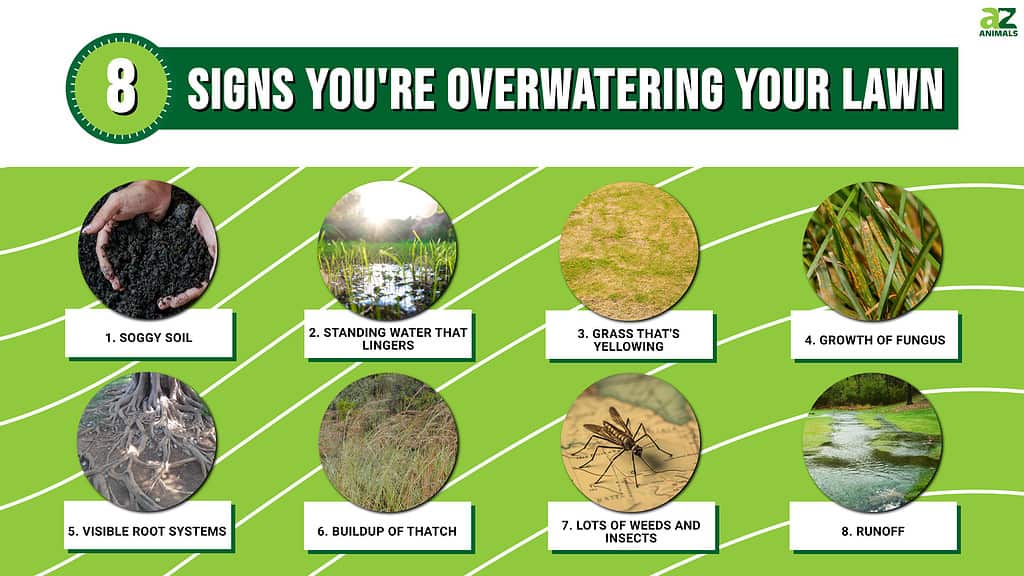
Why Overwatered Grass Won’t Grow
Before learning how to prevent overwatering your lawn, you need to understand why having too much moisture is so bad for your grass. As they say, too much of a good thing is no good at all. For your lawn, water is no exception to that rule. When your grass is too wet, your soil takes on a very ill-inviting form for future growth.
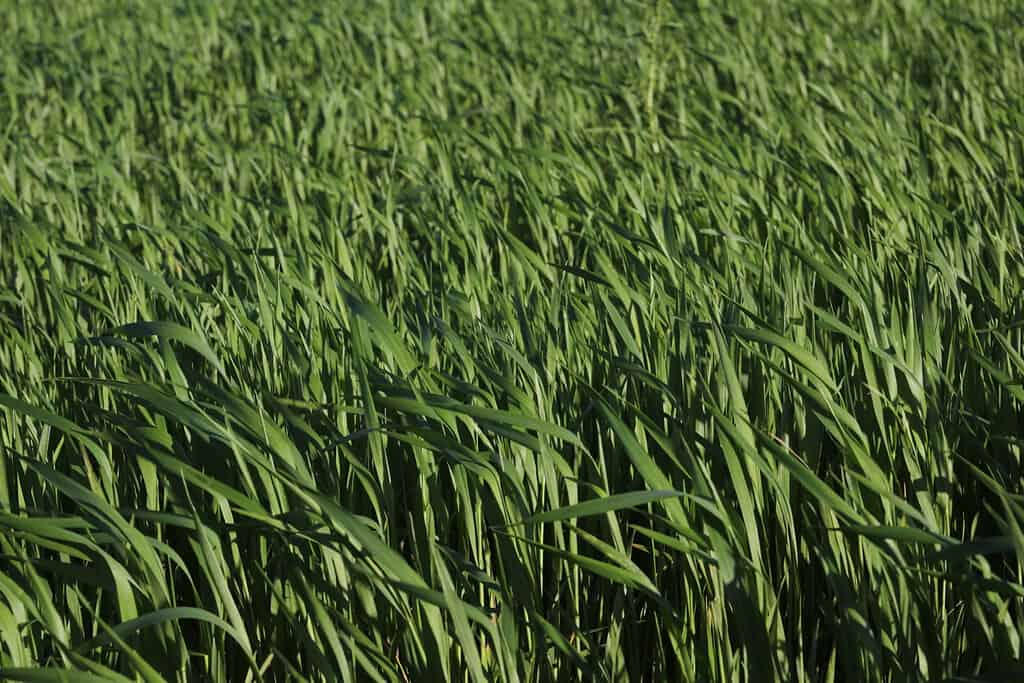
When grass is overwatered, the roots can lack oxygen and begin drowning in the oversaturated soil.
©Joann_Pate/ via Getty Images
What happens specifically is that your roots begin to drown in the oversaturated soil. When they try to absorb the necessary oxygen, they are stopped by the impact of the extra moisture. In turn, the new root systems very quickly become shallow despite needing deepness to effectively grow. Ideally, the water that the roots of your lawn receive should be percolated slowly and gently.
When this overwatering occurs, it exposes your lawn to a number of big problems. These problems will often manifest themselves as the signs of an overwatered lawn listed below. So, if you’re unsure of whether or not the lawn issues you’re experiencing are related to overwatering, read on to find out.
Ways to Prevent Overwatering
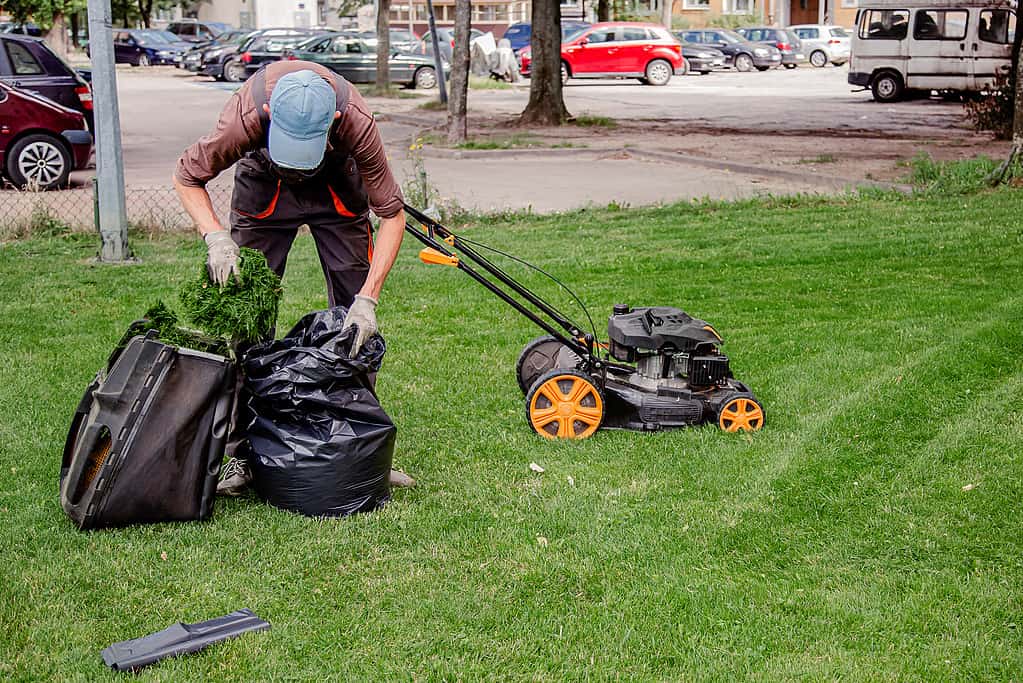
Watering your grass is better when it’s less frequent and more concentrated.
©EsfilPla/Shutterstock.com
It is always inconvenient to discover the signs of an overwatered lawn. That being said, this is an issue that is preventable in a number of ways. Here are a few small, easy tips to help create balanced watering habits:
- Invest in a soil moisture meter, using it on occasion to make sure that your watering is on the right track.
- Allow your soil time to dry in between watering sessions. Try to make your watering sessions deeper and more substantial, but perform them less frequently.
- Make sure that the aeration of your lawn is satisfactory so that there can be optimal drainage and little compaction.
- Actively plan and adjust your watering schedule based on upcoming rainfall and impending adverse weather conditions.
Fixing an Overwatered Lawn
Chances are that, by the end of this article, you’ll discover that your lawn is actually being overwatered. Although this is an inconvenient discovery, it isn’t a problem without a solution. There are some steps that you can take to restore your lawn to its former beauty and health. The first, most obvious thing is to reduce the amount you are watering your plants. Then, take some steps to monitor your watering, and address any of the signs of overwatering your lawn that you’ve been noticing. So long as your overwatering hasn’t resulted in entirely dead grass, it is sure to recover with time and diligence.
1. Soggy Soil
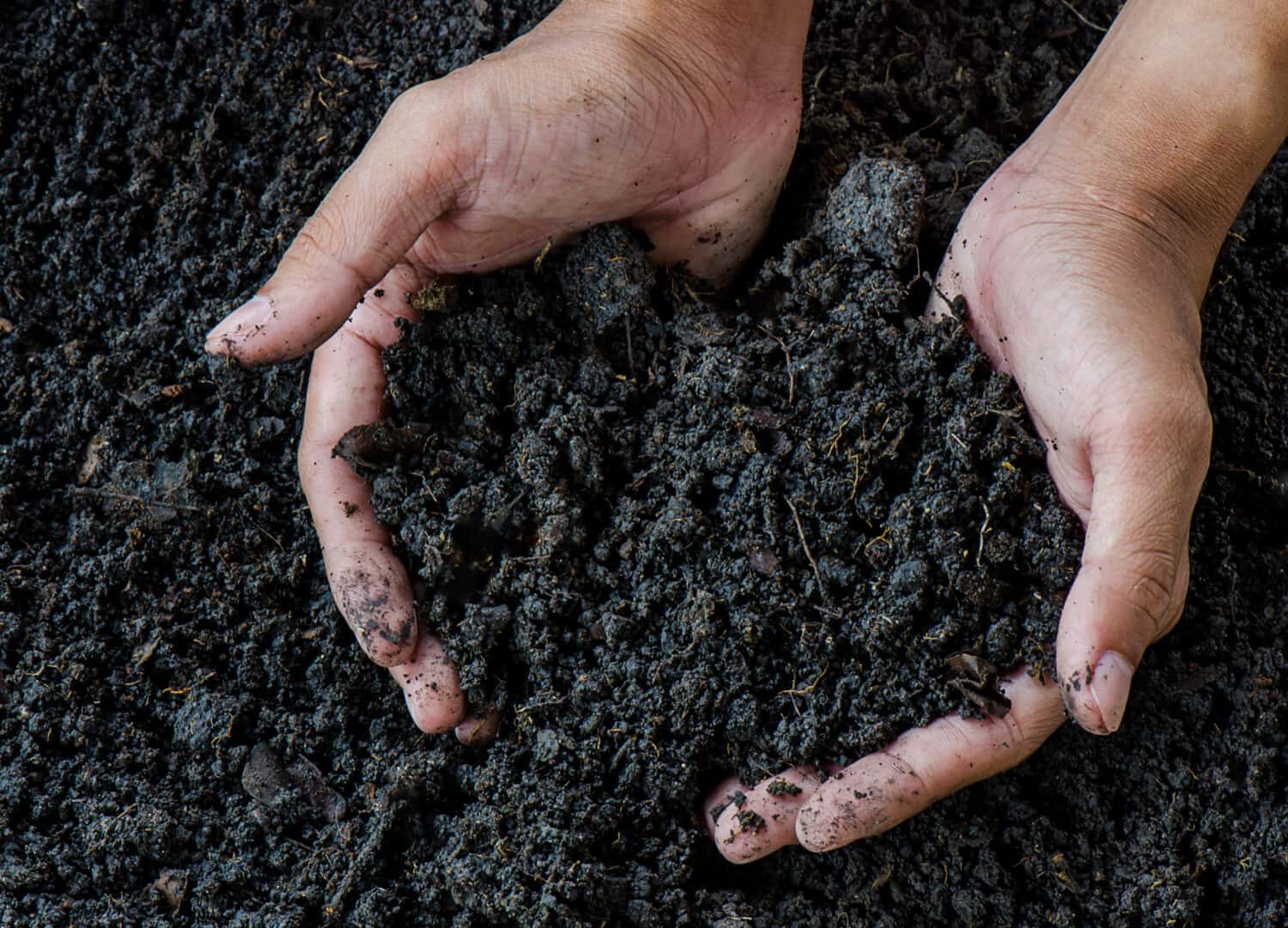
An oversaturated lawn will feel spongy or soggy when you walk on it.
©13Imagery/Shutterstock.com
One of the telltale signs of an overwatered lawn is that, a day or two post-watering, the grass in your lawn remains quite wet and soggy. To test this, wait two days after your soil has been last watered, and stick your finger into the soil. If it has a spongy feel, it’s likely quite oversaturated with water. Another related sign is that when walking through your soil, it is soft beneath your feet.
2. Standing Water That Lingers

When puddles of water abound in your lawn, it’s probably a sign you are watering it too much.
©FrankHH/Shutterstock.com
If you’ve started to notice remaining puddles days after rain or a watering session, this could be a sign of an overwatered lawn. When these puddles accumulate and linger, it is typically an indication of poor drainage. This happens when there has been an excessive amount of watering. With nowhere for this water to go, it simply sits unmoved.
3. Grass That’s Yellowing
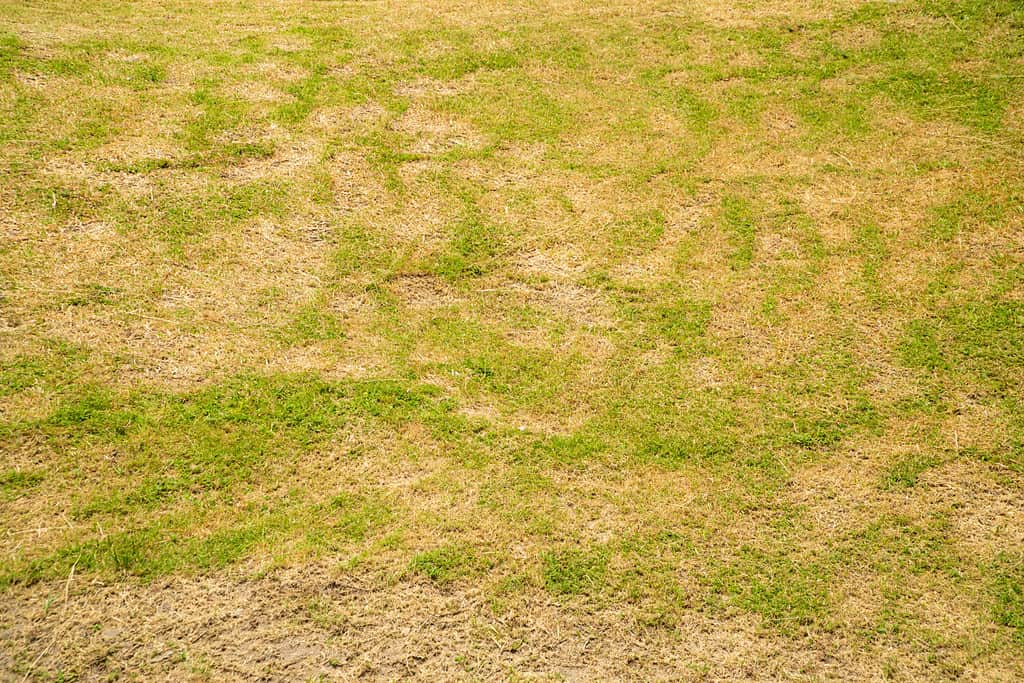
When grass is too saturated with water, it will begin to grow pale and yellow.
©SingjaiStocker/Shutterstock.com
It is well-known that healthy grass takes on a bright or dark green shade. If you’ve been watering correctly, that is the color it should remain. Once you begin noticing colors in your grass that diverge from this normalcy, you should begin to be a bit concerned. In the case of overwatered grass, one will start to notice the grass turn incredibly pale, and in some cases, even begin to yellow.
4. Growth of Fungus
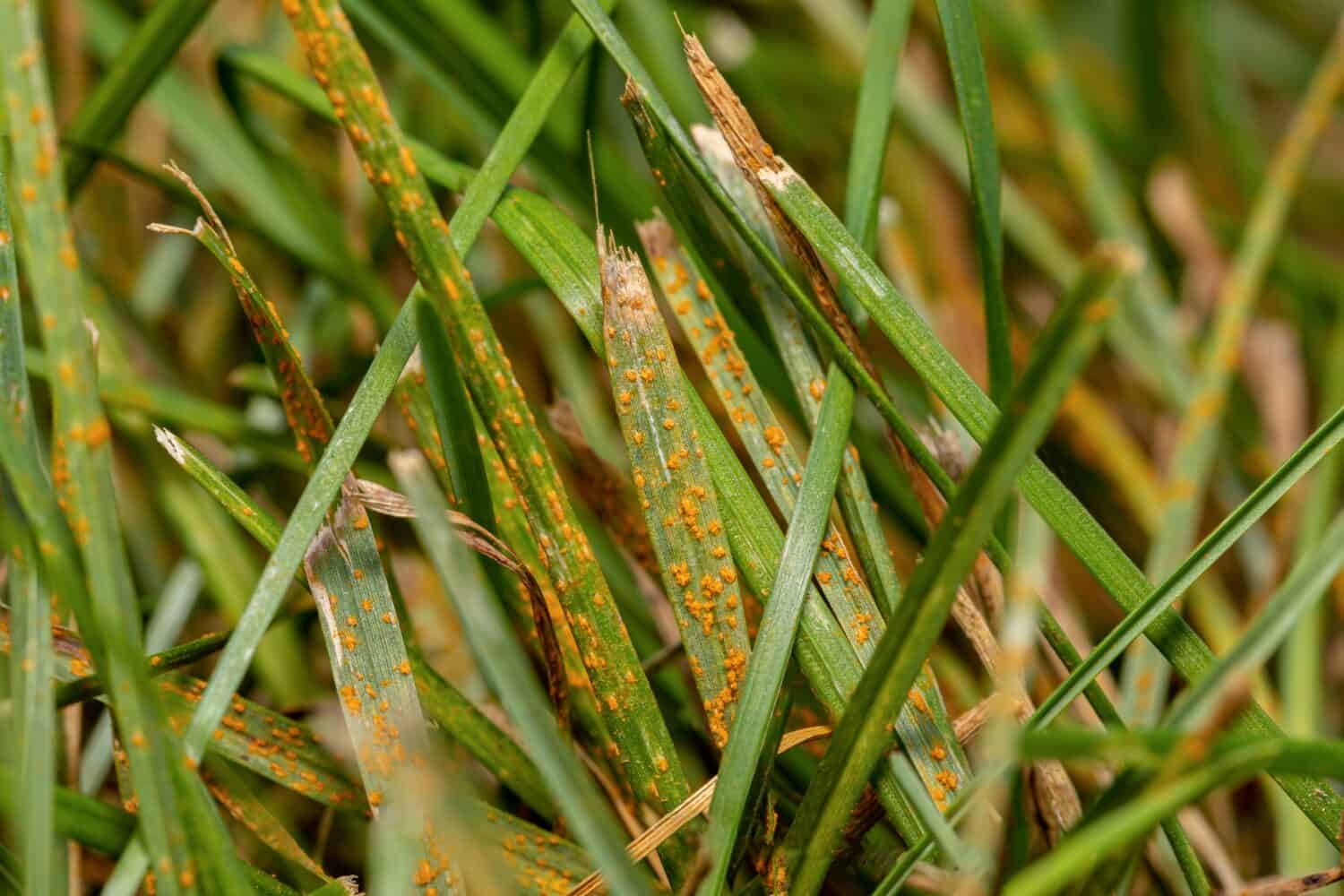
A moist environment resulting from overwatering can cause your lawn to develop funguses.
©J.J. Gouin/Shutterstock.com
You might have stepped onto your lawn one morning and noticed the scent of mold or musk, and while that might be indicative of a number of things, it could very well be the presence of fungi. When grass is overwatered, it becomes a very moist environment. This is precisely the kind of environment that lawn diseases thrive in. Other noticeable signs of this issue are large brown patches or visible groups of mushrooms.
5. Visible Root Systems

Overwatering can result in exposed root systems.
As briefly mentioned earlier, overwatering will create shallow root systems. Healthy roots like to grow deep into the soil, but with overly wet conditions, this can become impossible for the roots. They might instead create a home closer to the surface, where water is more accessible. If you are seeing visible root systems, this is another sign of overwatering.
6. Buildup of Thatch
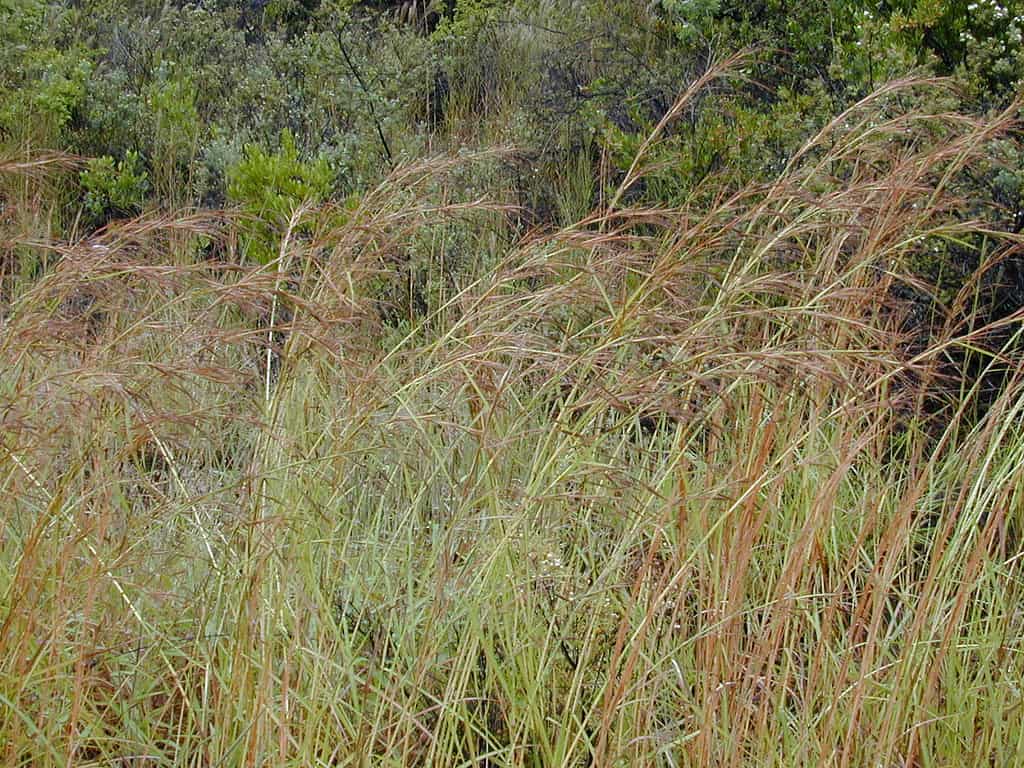
When too much thatch builds up in a lawn, it causes major issues.
Thatch is a layer of dead grass (or roots) that begins to accumulate in between the soil and the living grass. When too much thatch builds up, it causes major issues. Water, nutrients, and even air can become impossible for the roots of your grass to reach, risking the death of your grass. When your lawn is overwatered, it can contribute greatly to thatch buildup.
7. Lots of Weeds and Insects
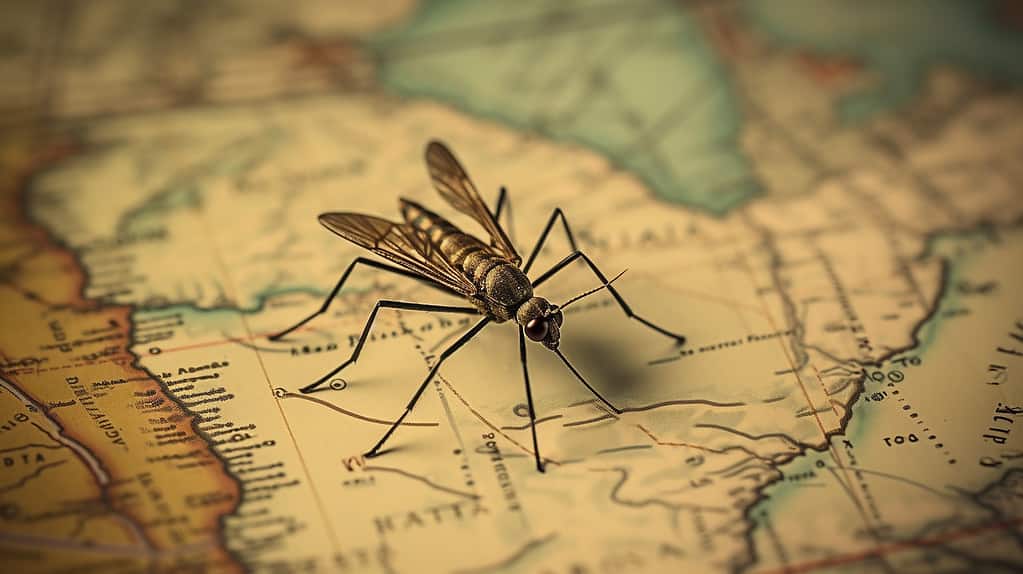
Weeds thrive in wet environments, so an increase in weeks like crabgrass and nutsedge is very indicative that your lawn is being overwatered. In addition to weeds, certain outdoor pests love the moist environment as well. These include mosquitos, who breed in standing water, and grubs, who like to inhabit overwatered grass.
8. Runoff
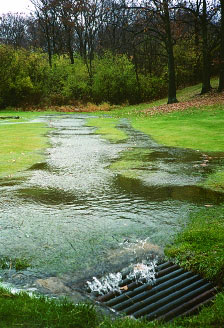
When a lawn is overwatered, there will be significant water runoff.
The last sign of an overwatered lawn is a noticeable amount of runoff. Healthy, regularly watered grass will simply soak up the water that comes with rainfall. But, when the lawn is oversaturated with water, there’s no more room. This leads to water running off from your lawn and into the street.
Summary of 8 Signs You’re Overwatering Your Lawn
| Signs | |
|---|---|
| 1 | Soggy Soil |
| 2 | Standing Water That Lingers |
| 3 | Grass That’s Yellowing |
| 4 | Growth of Fungus |
| 5 | Visible Root Systems |
| 6 | Buildup of Thatch |
| 7 | Lots of Weeds and Insects |
| 8 | Runoff |
The photo featured at the top of this post is © PrivinSathy/Shutterstock.com
Thank you for reading! Have some feedback for us? Contact the AZ Animals editorial team.







